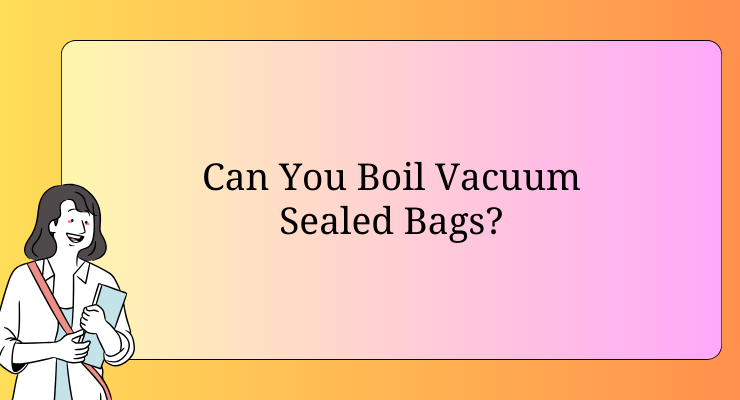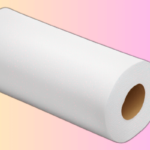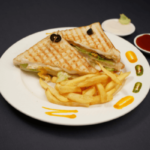Have you ever wondered if it’s safe to boil vacuum seal bags? Maybe you want to cook a meal using the sous vide method, or you’re just curious about the safety of boiling these bags. In this post, we’ll explore whether or not it’s safe to boil vacuum seal bags and provide some tips for using them in your cooking adventures. Without further ado, let’s delve into uncovering the solution to this frequently asked kitchen query.

Understanding the Material of Vacuum Seal Bags
Vacuum seal bags are made of a special type of plastic called polyethylene. This material is renowned for its capacity to endure high temperatures, ensuring its suitability for both sous vide cooking and boiling. However, not all vacuum seal bags are created equal, so it’s important to check the packaging and make sure that the bags are labeled as safe for boiling.
Certain bags might not be appropriate for boiling and may emit harmful chemicals under high-temperature conditions. It’s always best to use bags that are specifically designed for boiling to ensure safety and prevent any potential health risks.
When employing vacuum seal bags for boiling, it’s crucial to adhere to the manufacturer’s instructions and avoid surpassing the recommended temperature limit. By understanding the material of vacuum seal bags and using them properly, you can safely and confidently incorporate them into your cooking routine.
Potential Risks of Boiling Vacuum Seal Bags
Understanding the material of vacuum seal bags is crucial when it comes to boiling them. Vacuum seal bags commonly consist of a specialized plastic known as polyethylene, prized for its capacity to endure elevated temperatures. This makes it safe for sous vide cooking and boiling. However, not all vacuum seal bags are created equal, and it’s important to check the packaging to ensure that the bags are labeled as safe for boiling.
Utilizing bags unsuitable for boiling may lead to the release of hazardous chemicals under high temperatures, posing potential health risks. To mitigate any potential health hazards, it’s advisable to utilize bags explicitly designed for boiling purposes.
By understanding the material of vacuum seal bags and using them properly, you can safely and confidently incorporate them into your cooking routine. It’s essential to prioritize safety when using vacuum seal bags, especially when it comes to boiling them, to avoid any potential risks and ensure a safe cooking experience.
Tips for Safely Using Vacuum Seal Bags in Boiling Water
Using vacuum seal bags in boiling water can be a great way to cook sous vide and ensure a delicious meal. Nevertheless, exercising caution and adhering to safety protocols is imperative when employing these bags in elevated temperatures. Not all vacuum seal bags are designed to withstand boiling, so it’s crucial to check the packaging and ensure that the bags are labeled as safe for boiling. Employing unsuitable bags for boiling may result in the emission of harmful chemicals under high temperatures, thereby posing a health risk.
To mitigate the possibility of health concerns, it is advisable to utilize bags explicitly crafted for boiling purposes. Adhering to the manufacturer’s instructions and refraining from surpassing the recommended temperature is crucial when employing vacuum seal bags for boiling. By understanding the material of vacuum seal bags and using them properly, you can safely and confidently incorporate them into your cooking routine.
Prioritizing safety when using vacuum seal bags, especially when it comes to boiling them, is essential to avoid any potential risks and ensure a safe cooking experience. With the right precautions and proper usage, vacuum seal bags can be a valuable tool for cooking delicious meals with the sous vide method. By being aware of the materials and guidelines for using these bags, you can cook with confidence and enjoy the benefits of sous vide cooking without compromising on safety.
Alternative Cooking Methods for Vacuum Seal Bags
One alternative method is to use the bags for marinating and infusing flavors into your meats and vegetables. Just place your ingredients and marinade inside the vacuum seal bag, eliminate the air, and seal it shut. Let the flavors meld together in the refrigerator, and then cook the ingredients using your preferred method, such as grilling or roasting. The vacuum seal bag will help infuse the flavors into the food, resulting in a delicious dish.
Another alternative cooking method for vacuum seal bags is using them for freezing and storing pre-portioned meals. You can prepare a large batch of your favorite meals, portion them into vacuum seal bags, remove the air, and seal them. Then, freeze the bags for later use. When you’re ready to eat, simply thaw the bag and reheat the meal using your preferred cooking method. This method offers the convenience of having homemade meals readily available whenever you require them.
When utilizing vacuum seal bags for cooking, it’s imperative to emphasize safety as a top priority. Not all vacuum seal bags are designed to be boiled, so it’s essential to use bags that are specifically made for this purpose. These bags are crafted from materials capable of withstanding heat, ensuring their safety for use in boiling water. Ensure to consistently adhere to the manufacturer’s instructions and refrain from surpassing the suggested temperature limit when utilizing vacuum seal bags for boiling.
Conclusion
In conclusion, while it may seem like a convenient option to boil vacuum seal bags for cooking, it’s not recommended. The elevated temperature may lead to the deterioration of the bags, potentially resulting in the release of harmful chemicals into your food. It’s best to follow the manufacturer’s instructions for using vacuum seal bags and choose alternative cooking methods for your food. Investing additional effort is worthwhile when it comes to safeguarding your health and safety.
FAQ
1. Can you boil vacuum seal bags?
Yes, you can boil vacuum seal bags. TThey’re engineered to endure high temperatures, ensuring their safety for boiling purposes. Ensure the bags are tightly sealed to avoid any potential leaks.
2. What kind of food can I boil in vacuum seal bags?
You can boil a variety of foods in vacuum seal bags, such as vegetables, seafood, and meats. It’s a great way to cook food sous vide style, locking in the flavors and nutrients.
3. What precautions should I observe when boiling vacuum seal bags?
It’s important to make sure the bags are properly sealed and free of any punctures or tears before boiling. Also, be cautious when handling the hot bags to avoid burns.
4. Can I reuse vacuum seal bags after boiling?
It is not recommended to reuse vacuum seal bags after boiling, as the high heat can compromise the integrity of the bags. For optimal results, it’s advisable to use a fresh bag for each cooking session.
5. Can I use any type of vacuum seal bag for boiling?
Not all vacuum seal bags are suitable for boiling. Make sure to use bags specifically designed for sous vide or boiling, as they are made to withstand high temperatures.
As an Amazon Associate, I earn from qualifying purchases.




Hello there, just became alert to your blog through Google,
and found that it’s really informative. I’m going to watch out for brussels.
I’ll appreciate if you continue this in future. Lots of people will be benefited from your writing.
Cheers!